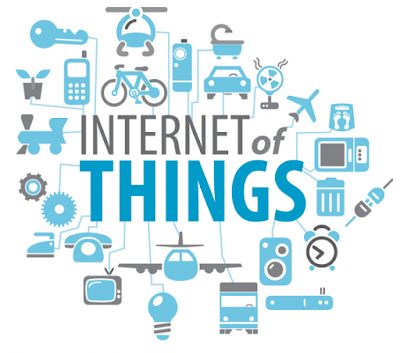ARTICLE BY - Vinayak Sharma,BCA- 2nd year, 2nd shift
IoT Internet of things” an era where machines talk to each other”.
The Internet of Things (IoT) is the network of physical objects, devices, vehicles, buildings and other items which are embedded in electronics, software, sensors, and network connectivity (cloud), which enables these objects to collect and exchange data. The term “Internet of Things” isn’t new. Almost 20 years ago, MIT professors (Kevin Ashton) described the world where “things” (devices or sensors) are connected and able to share data. IoT focuses on Machine to Machine communication (M2M). It is the vast network of interconnected devices that share data over the internet to improve productivity and automation.
“Things” can be referred as a vast variety of devices such as Room thermostat, washing machine, smart homes, and Smart vehicle. IoT is the new future where cloud, hardware (microchips, sensor, Bluetooth, Wi-Fi), software make their own world communicate and provide better efficiency to the human being. As by OECD (Organization for Economic Co-operation and Development) IoT devices online per 100 inhabitants, Korea has 37.9 and India have 0.6.
According to ABI (Allied Business Intelligence), there will be 30 billion devices will be connected wirelessly to the Internet of things by 2020. As we know Hardware costs are falling. The costs of Internet of Things components such as microchips, GPS sensors, and accelerometers have fallen as volumes have increased. And it is not simply a cost reduction—tiny microchips are now capable of running more advanced software than ever. The software is more upgraded than ever. The ability to run JavaScript on devices has been increased and python is also a very strong language to work with IoT. Connectivity is increasing rapidly. Previously, IoT solutions were limited to the wire or wireless local area network connections as mobile operators priced M2M connections out of range. No longer. Fueled by the additional capacity that advanced cellular networks provide, mobile operators are embracing the Internet of Things. IoT can be used in MEDIA (Data Capture), Environment Monitoring (water quality, soil condition), Infrastructure Management (e.g. device monitoring- Bridge to provide access to ships), Manufacturing (Assembly line, robots on factory floor with back-end systems), Medical Healthcare system (remote health monitoring, emergency alerts to Cellphone), Building And Home Automation (Smart house with auto thermostat and door open-close alert, lighting), Large Scale Deployment e.g.: Songdo, South Korea, the first of its kind fully equipped and wired smart city, is near completion. Nearly everything in this city is planned to be wired, connected and turned into a constant stream of data that would be monitored and analyzed by an array of computers with little, or no human intervention.
The Internet needs Network, basically a specific address to each device. IP address as a unique identifier. However, due to the limited address space of IPv4 objects in the IoT will have to use IPv6 to accommodate the extremely large address space required. Objects in the IoT will not only be devices with sensory capabilities but also provide actuation capabilities (e.g., bulbs or locks controlled over the Internet).
To a large extent, the future of the Internet of Things will not be possible without the support of IPv6.
Microsoft, Intel, Facebook and many more companies are investing in IoT. Developments kits are available to make any device into IoT for e.g.: Intel, Microsoft, Arduino, ARM IoT starter Kit. Tiny Sensor, Microchips, RAM, CPU attached to one single Mini Computer size of a visiting card e.g.: Raspberry pi, Arduino (controller) are important for IoT future.
Most likely problem will be the "Basket of remotes" problem, where we'll have hundreds of applications to interface with hundreds of devices that don't share protocols for speaking with one another. To solve this problem, one of them called the "predictive interaction, where cloud or fog based decision makers will predict the user's next action and trigger some reaction.












0 comments:
Post a Comment